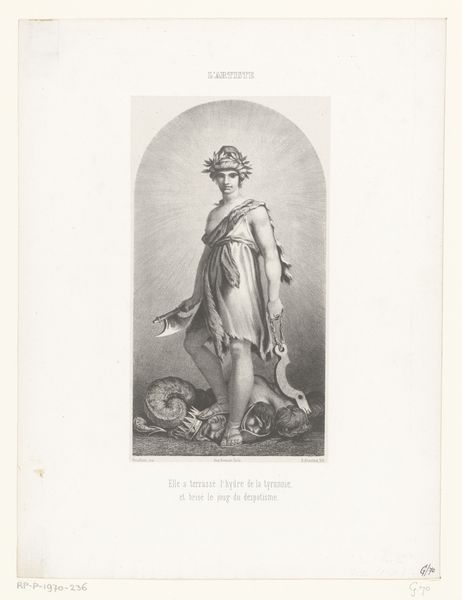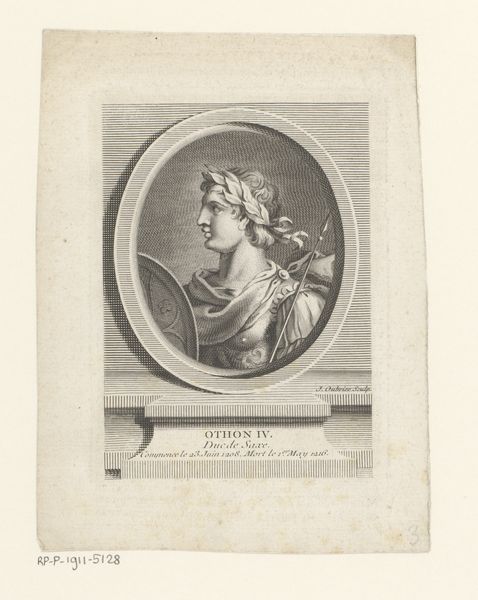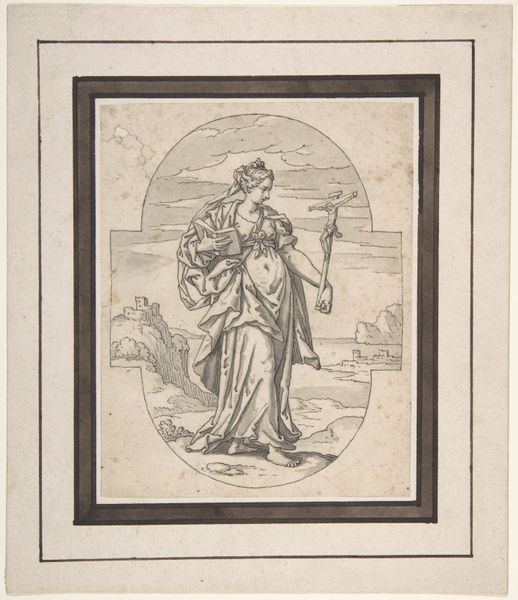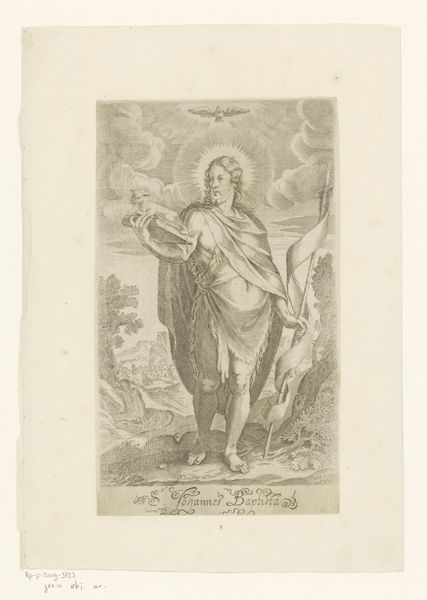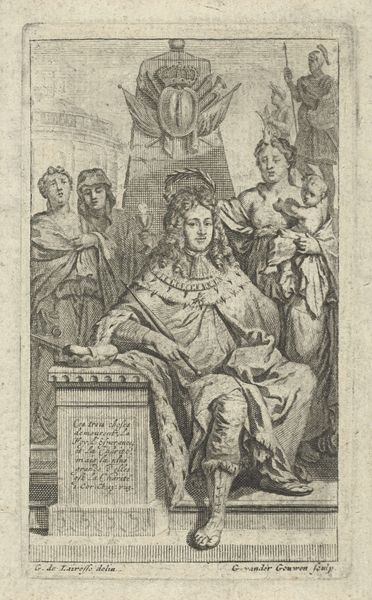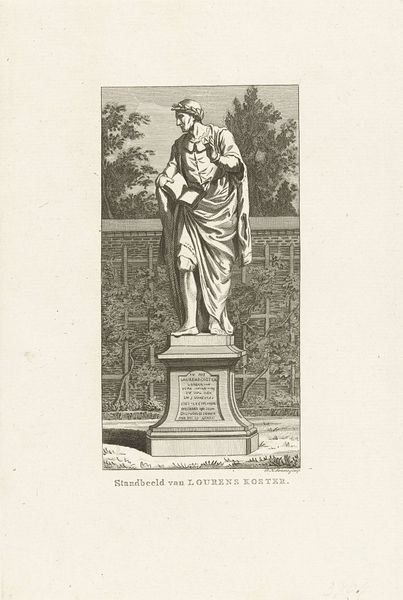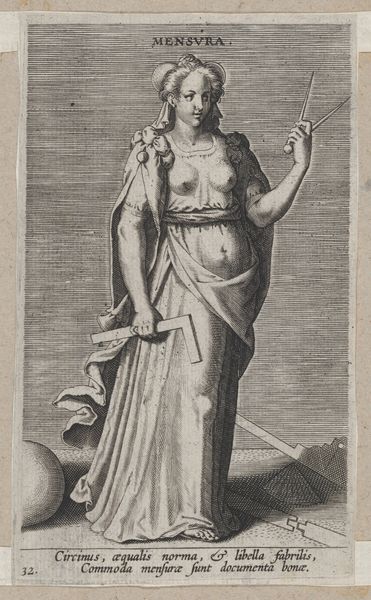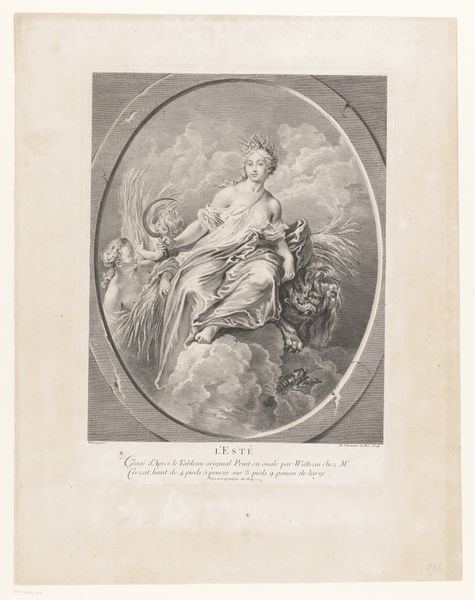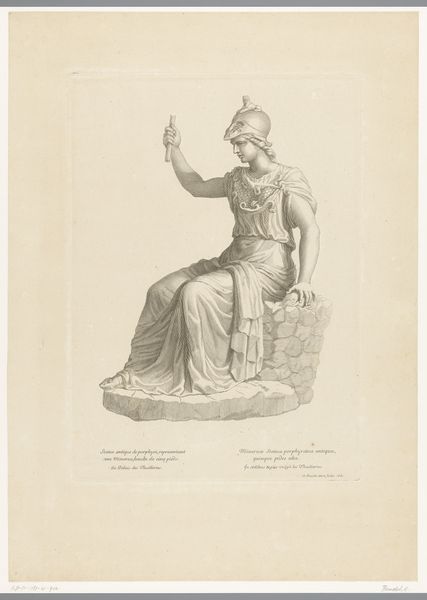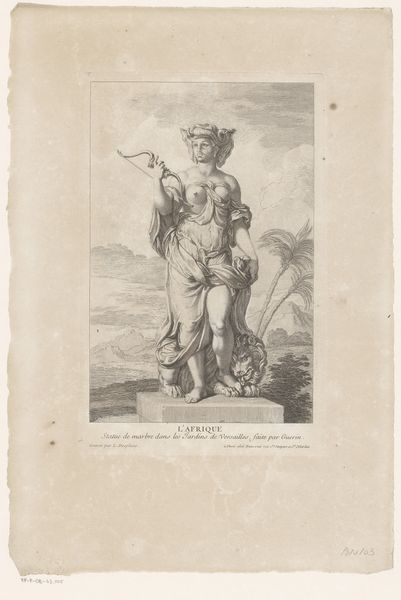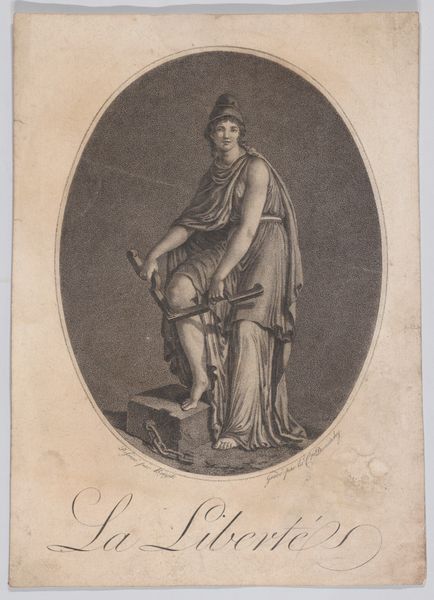
print, engraving
#
portrait
#
allegory
#
baroque
# print
#
old engraving style
#
history-painting
#
engraving
Dimensions: height 292 mm, width 185 mm
Copyright: Rijks Museum: Open Domain
Curator: We are looking at an engraving called “Europa,” made by Louis Desplaces sometime between 1697 and 1739. What are your first thoughts? Editor: My first impression is one of cool authority, of measured confidence. The figure stands as an allegory and statue simultaneously. Its monochrome palette speaks to permanence and monumentality. Curator: The symbolic language here is very deliberate. Note how Europa, likely derived from Greek mythology, is not simply represented but *personified* as a symbol of power and authority, encapsulated in a portrait. Editor: Indeed. And speaking of language, consider the socio-political backdrop of prints during that era. These weren't just aesthetic objects but rather, vehicles of propaganda, meant to disseminate certain ideological frameworks and concepts to a broader public through accessible materials like paper and ink. How else could they spread these views? Curator: I'd agree that distribution of power is inherent in the very structure of allegory. The layering of meaning, where one subject represents something else entirely, demands that the viewer decode its semiotics. How might period viewers interpreted these visual cues in connection to continental political ideologies? Editor: Perhaps by interrogating how a classical story became a modern proclamation. But back to materiality. As an engraving, the physical process of creating this image demanded skill—each line etched, each impression printed involved manual labor, directly contesting modern mass-produced simulacra. Its relative affordability surely made the visual accessible to wider societal layers than just royal households. Curator: A key consideration. We are forced to reconsider art as intellectual expression if we emphasize craft. Still, even a seemingly straightforward allegory opens avenues for various interpretations across viewers from diverse cultural or social contexts, making readings complex. Editor: Absolutely. This reminds us how critical material conditions intersect interpretive strategies, even when analyzing something so structurally formal like allegory. Thank you, "Europa" for spurring us onward. Curator: It certainly provides much food for thought concerning art’s place within culture—for maker and beholder alike.
Comments
No comments
Be the first to comment and join the conversation on the ultimate creative platform.
